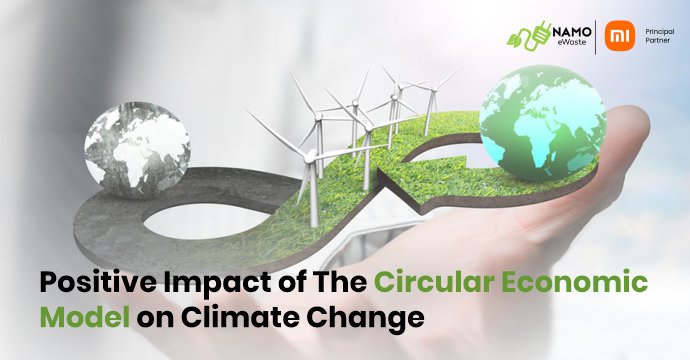As the world continues to face the challenge of climate change, it is clear that we need to shift our current economic model to a more sustainable one. The Circular Economic Model is one such model that is gaining traction around the world for its ability to reduce waste, conserve resources and reduce greenhouse gas emissions. In this blog, we will explore the benefits of the Circular Economic Model and its positive impact on climate change.
The Need for a Sustainable Economic Model
The world is facing an unprecedented challenge in the form of climate change. The increasing concentration of greenhouse gases in the atmosphere is causing temperatures to rise, leading to more frequent and severe weather events, rising sea levels, and damage to ecosystems. One of the main drivers of climate change is our current economic model, which relies on a linear approach to resource use. In this model, resources are extracted, processed, and disposed of at the end of their useful life. This approach leads to waste, pollution, and the depletion of natural resources.
To address the challenges of climate change, there is a growing need for a sustainable economic model. One such model is the Circular Economic Model. This model aims to keep resources in use for as long as possible, extracting the maximum
Circular Economic Model: What is it?
The Circular Economic Model is an economic model that aims to keep resources in use for as long as possible, extracting the maximum value from them before ultimately recovering and regenerating them. The circular model of economy differs from the traditional linear model, which takes a ‘take, make, dispose’ approach to resources. In contrast, the circular economic model is designed to be restorative and regenerative by design.
Circular Economy: Benefits
There are many benefits of circular economy but these few are the most important:
- Resource Conservation: The Circular Economic Model focuses on reducing waste by keeping resources in use for as long as possible. This reduces the need for new resources and therefore reduces the number of natural resources extracted from the environment.
- Lower Greenhouse Gas Emissions: The Circular Economic Model has the potential to reduce greenhouse gas emissions by reducing waste, promoting energy efficiency and encouraging the use of renewable energy sources.
- New Business Opportunities: The Circular Economic Model offers new business opportunities for companies that can create innovative products and services that fit within this model. By creating value from waste, companies can generate revenue while reducing their environmental impact.
- Job Creation: The Circular Economic Model has the potential to create jobs in areas such as recycling, remanufacturing, and repairing. These jobs are typically local and can help stimulate local economies.
The Impact of Circular Economy:Climate Change
The impact of the Circular Economic Model on climate change is significant. By reducing waste and greenhouse gas emissions, the Circular Economic Model can help to mitigate the impacts of climate change. For example, the use of renewable energy sources, such as wind and solar power, can help to reduce the amount of greenhouse gases emitted by the energy sector.
Additionally, the Circular Economic Model can help to reduce emissions in the manufacturing sector. By promoting the use of recycled materials and remanufacturing, the amount of energy needed to produce new products can be reduced. This leads to a reduction in greenhouse gas emissions and a more sustainable production process.
Ending Note…
The Circular Economic Model offers a positive solution to the challenges we face with climate change. By reducing waste, conserving resources, promoting energy efficiency and creating new business opportunities, this model has the potential to create a more sustainable future for us all. As we continue to face the challenges of climate change, it is clear that the Circular Economic Model has a vital role to play in creating a more sustainable future for our planet.
Circular economy is not just a concept, but a real-world solution that can benefit our planet and future generations. NAMO, as an e-waste recycling company, is committed to contributing to the circular economy model. By recovering valuable resources from electronic waste, we reduce the need for extracting new materials, conserve natural resources, and promote a sustainable production process. Our efforts not only help in waste reduction but also generate new job opportunities and promote a sustainable business model. By creating a closed-loop system for electronic waste, NAMO aims to create a more sustainable future, in line with the principles of the Circular Economic Model.


